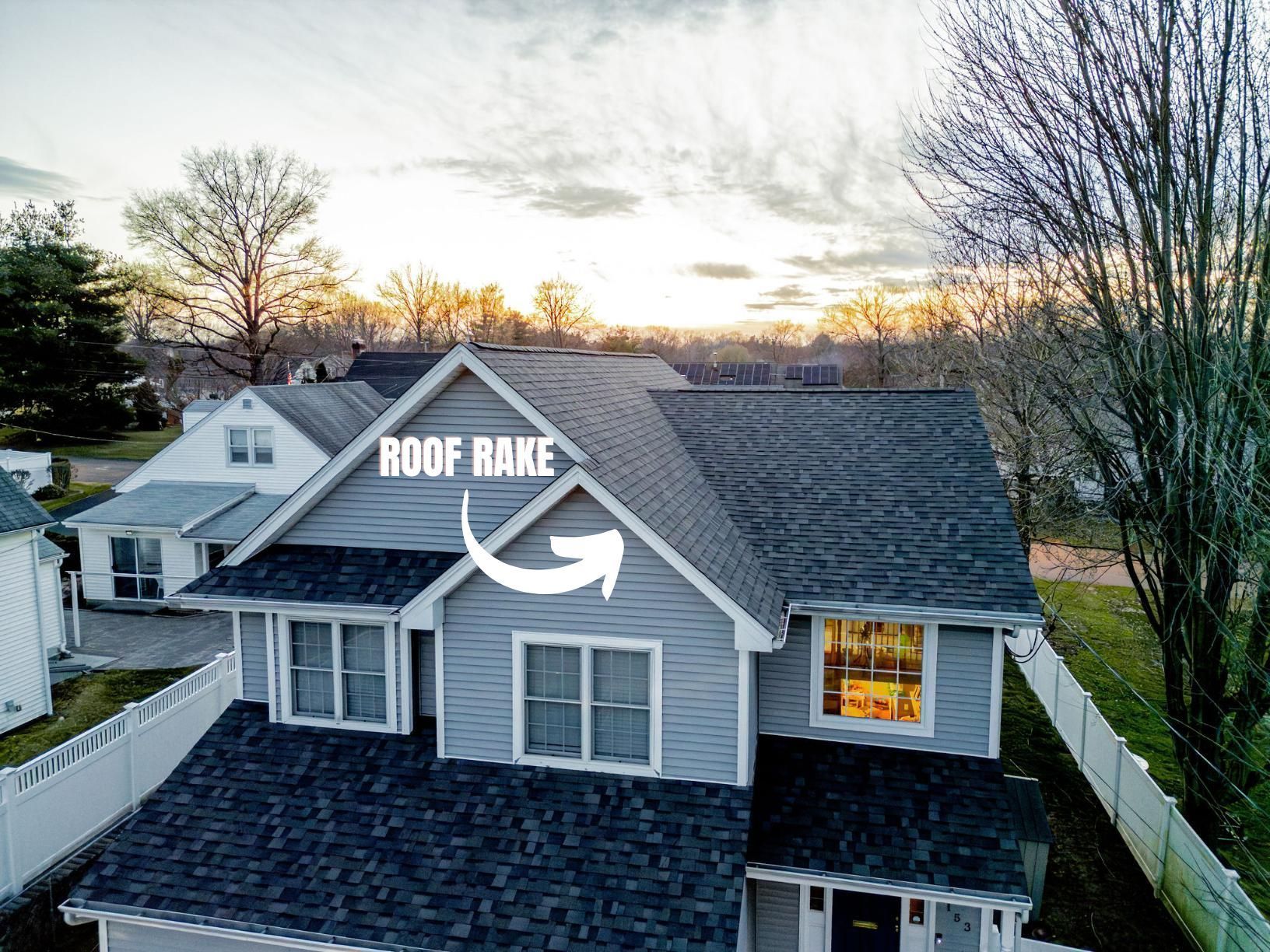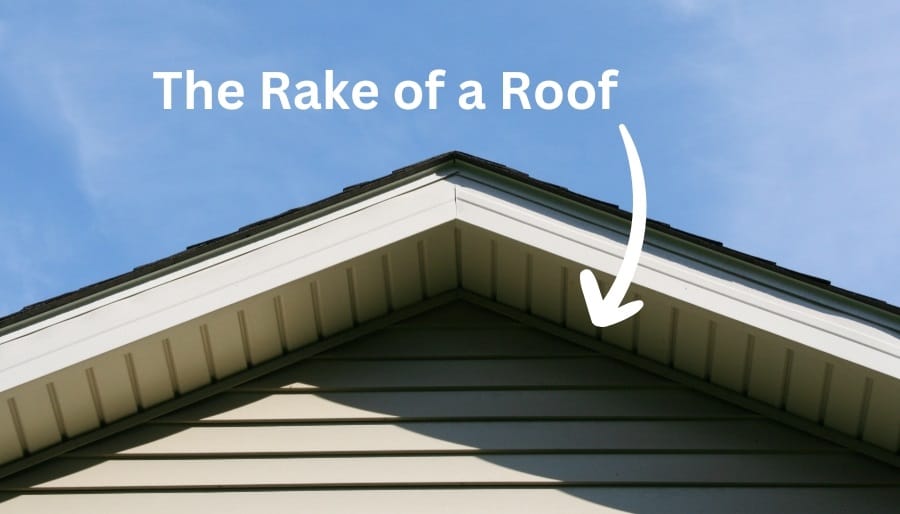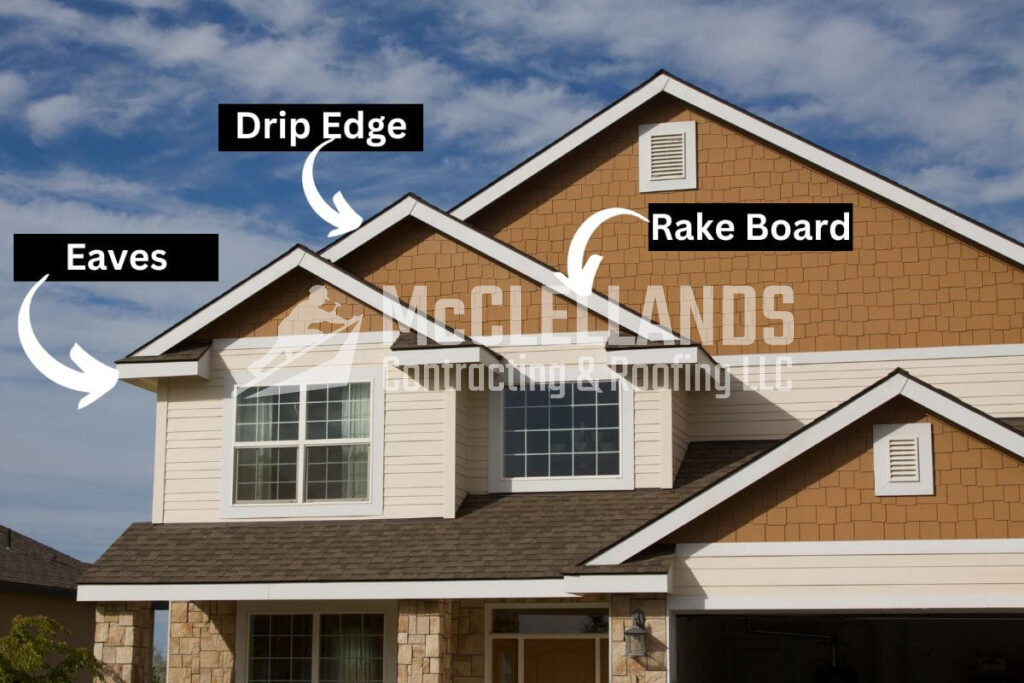What exactly is a "rake" when it comes to your home's roof, and why should it matter to you? The "rake" isn't just a random architectural detail; it's a critical element in protecting your home from the elements, influencing its overall design, and ensuring its longevity.
A rake roof, at its core, is the portion of a roof that extends beyond the exterior wall at the gable end, stretching from the eave to the ridge. Think of it as an overhang at the triangular end of your roof, a design choice that serves more than just aesthetic purposes. Instead of abruptly ending at the wall, the rake extends outwards, providing an extra layer of defense against potential leaks and the elements.
To understand the role of the rake better, let's delve into its components and functions. The rake of a roof, specifically on a gable roof, is the exposed, angled edge that runs along the sloped sides. It's what you visually identify as the sloping edge, the triangular portion extending from the eave (the lower edge) to the ridge (the peak) of the roof. Essentially, the rake is the trim that follows the roof's slope on a gable end.
The significance of the rake goes beyond mere appearance. The rake, in essence, plays a crucial role in your home's roofing system. It facilitates proper drainage, steering water away from the walls and foundation, preventing water from seeping in, and thereby avoiding potential structural damage or interior water issues. This is especially important in regions with heavy rainfall or snowfall. Moreover, the rake provides aesthetic consistency to the roofs slope.
The rake can also be referred to as the "roof edge". It refers to the inclined edge created by the first and last roofing units along the roof's sloped ends. It is an important part of roofing systems as it helps the water to drain, preventing leakage, and giving uniformity to the slope of the roof. It is important for extending the roof's lifespan and preventing issues like mold or rot.
There are, broadly, two main types of rakes: Exposed and Covered. Exposed rakes show off the rafter tails, while covered rakes encase the rafter tails in a protective covering, often with soffit and fascia. Both serve the same purpose, but the choice between them is largely one of style and aesthetic preference.
The design of the rake can greatly influence the look and feel of a home. An overhanging rake detail, for instance, can create a more sheltering and traditional appearance, while a clipped rake can contribute to a cleaner, more contemporary aesthetic. Furthermore, the choice should be compatible with the eave detail, ensuring a cohesive and functional design.
It is also important to differentiate between a rake and a roof pitch. While both relate to the angles of a roof, the pitch refers to the angle of the entire roof, while the rake specifically deals with the angle and edge of the gable. These details can vary based on the architectural styles of the home.
The rake boards are essential components of a home's roofing system. The boards are installed at a perpendicular angle to the roof slope, offering a finished edge and adding curb appeal. These boards are often called verge boards or barge boards and can be made from different materials.
Understanding the rake is also vital when it comes to roof maintenance. While the main focus is often on shingles and flashing, neglecting the rake can lead to issues such as mold, rot, and granule loss, all of which can shorten the roof's lifespan. Regular inspections and timely repairs are critical for the longevity of your roof, and therefore, the protection of your home.
In some cases, the rake is absent. Hip roofs, where all sides slope downwards, do not have a gable end, and therefore, the traditional rake. Instead, the edge is a horizontal eave all the way around.
A trim along the inclined edge of a gable roof that covers the top ends of the siding for aesthetic and protective purposes. The design can vary depending on the architectural style of the home. The rake is not exactly on the roof. It is a term that describes the sloped sides of a gable end.The rake can be flat with no overhang, or it can overhang the gable end like an eave. The overhanging rake then is closed in with soffit and fascia.
The role of a roof rake is important. It prevents the property from the elements, like rain and snow. The rake is typically found on the gable end of your roof, which is the triangular portion of the wall that extends from the eaves to the ridge. The rake is typically found on the gable end of your roof, which is the triangular portion of the wall that extends from the eaves to the ridge. Roof rakes, also known as rake boards, are an essential part of your homes roofing system.
In contemporary settings, a covered roof rake is often seen. A roof\u2019s rake is the outermost edge of the roof that extends beyond the gable ends, playing a crucial role in the overall structure and design of a home. Its location at the gable ends of a roof is what makes it different from other parts of the roof. A rake on a roof is an inclined edge that stretches along the gable. It runs from the eave up to the peak of the roof.
Here is some additional information regarding the rake's role in roof maintenance. Roof maintenance goes beyond the main shingles and flashing, especially if you're aiming for extending roof lifespan. This makes it a pivot point for issues such as mold, rot, and granule loss if neglected.
Roof rakes come in two main types. The rake of a roof refers to the angled edge that runs from the peak (or ridge) of a gable roof down to the eaves. The rake, also known as a roof edge, refers to the inclined edge formed at the first and last roofing unit along the sloping ends of the roof.
| Attribute | Details |
|---|---|
| Definition | The angled edge of a roof extending from the eave to the ridge on a gable or pitched roof. |
| Function | Enhances architectural appeal, facilitates drainage, prevents leaks, and provides aesthetic uniformity. |
| Location | Gable ends or sloped sides of a roof. |
| Types | Exposed (showing rafter tails) and Covered (enclosed with protective material). |
| Maintenance Considerations | Subject to issues like mold, rot, and granule loss if neglected. |
| Complementary Component | Works in harmony with the eave detail for overall design cohesion. |
| Distinction | Distinct from roof pitch, which refers to the overall roof angle. |
| Materials | Often made from wood, vinyl, or composite materials. |
| Gable Roof | A gable roof has two sloping sides that meet at the ridge. |
| Hip Roof | Hip roofs, where all sides slope downwards to the walls, may lack a dedicated rake. |


